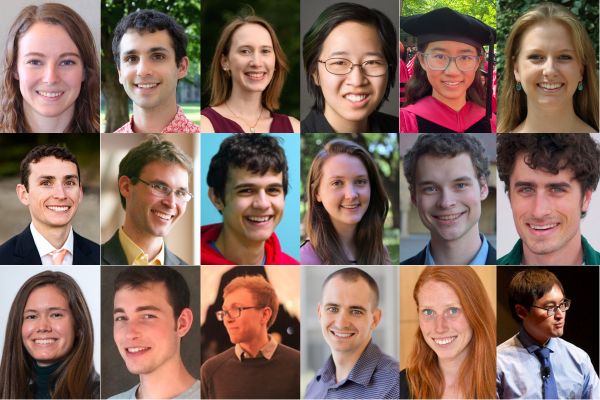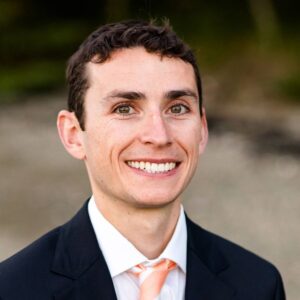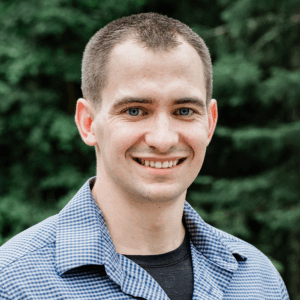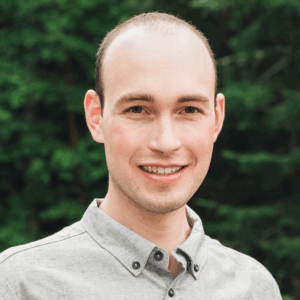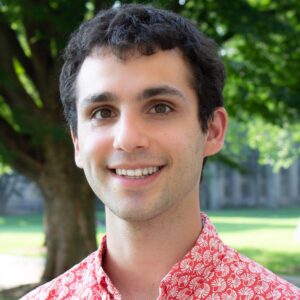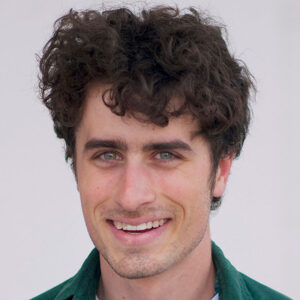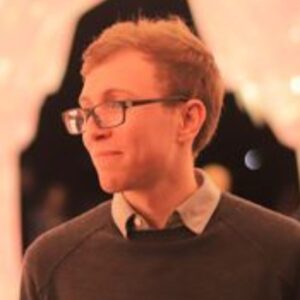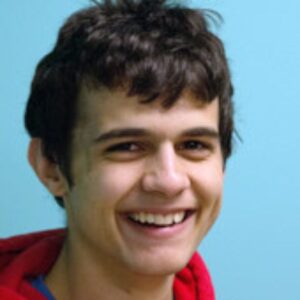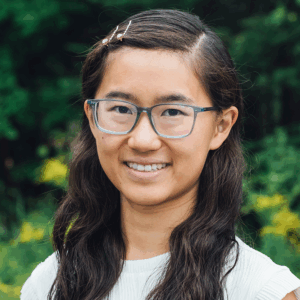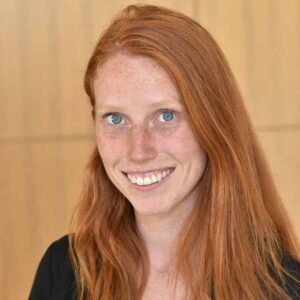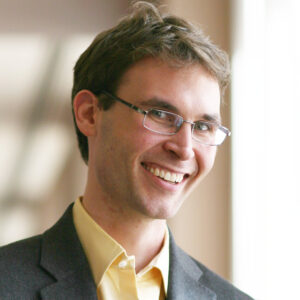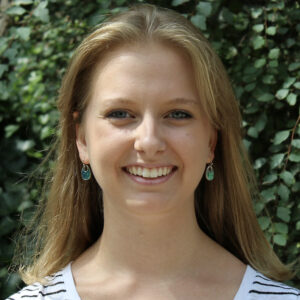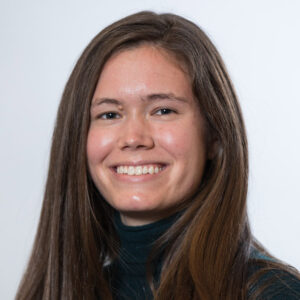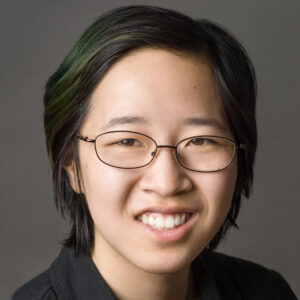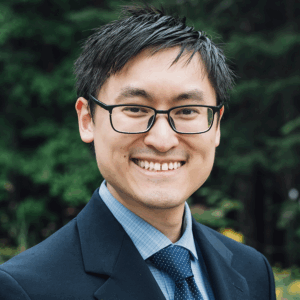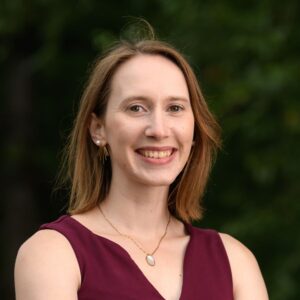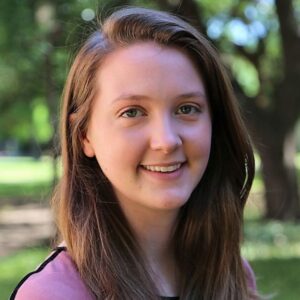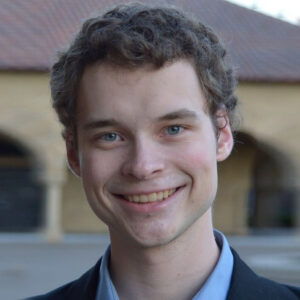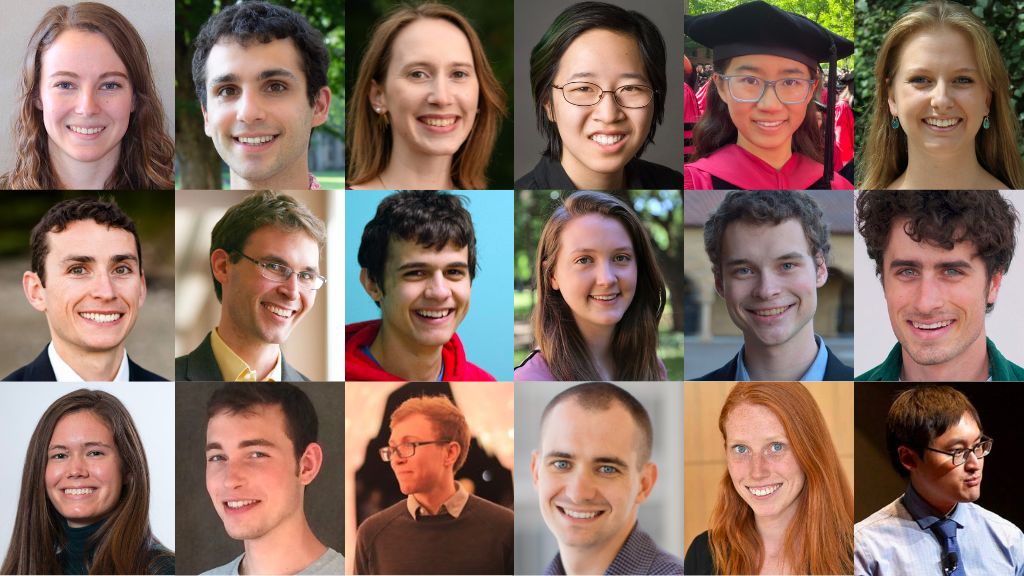
The Fannie and John Hertz Foundation is proud to recognize the most recent graduates of the Hertz Fellowship in applied science, mathematics, and engineering.
This year’s graduating Hertz Fellows have tackled some of the most pressing challenges facing our nation and the world throughout their doctoral studies. The flexibility and support provided by the Hertz Fellowship allowed fellows the opportunity to pursue their own original ideas without the constraints often imposed by project-specific funding. Their research utilized statistics and machine learning to make robotics safer, developed a new quantum machine learning algorithm and improved the quality and accessibility of health care, to name a few.
The Hertz Fellowship experience continues beyond the initial award to include permanent membership in a multigenerational, intellectual community of peers that includes some of the nation’s most noted science and technology leaders, offering a unique engine for professional development and collaboration. Hertz Fellows have access to lifelong programming, such as mentoring, events and networking, which has led them to form research collaborations, commercialize technology and create and invest in early-stage companies together, among other opportunities.
We are already seeing these individuals deliver on their remarkable potential to tackle big problems and become emerging leaders in their fields. Their work will undoubtedly continue to fuel the mission of the Hertz Foundation to strengthen our nation in ways that have a meaningful and far-reaching impact, from enhancing national security to improving human health.
We congratulate them and look forward to celebrating the fruits of their careers.
Explore the complete directory of Hertz Fellows to learn more about their diverse backgrounds and interests.
Meet the Graduating Hertz Fellows
Thesis: Coordination Chemistry of Fe–S clusters Supported by N–heterocyclic Carbenes
Alex Brown’s thesis work focused on developing the coordination chemistry of iron-sulfur clusters to better understand their roles in biological systems and, inspired by their diverse and challenging reactivity in enzymes, to develop new inorganic reactions using iron-sulfur clusters.
Brown is now completing a postdoc at Princeton University with Todd Hyster, focusing on the development of new biocatalytic reactions.
“What I valued most about being a Hertz Fellow was the opportunity to meet many other fellows working in widely different areas and getting to hear about their work and interests. These experiences definitely broadened my perspective beyond the research conducted in my department.”
Thesis: Statistical and Computational Methods for Analysis of Spatial Transcriptomics Data
Dylan Cable’s thesis work specialized in developing statistical methods for interpreting biological data, specifically spatially indexed gene expression data. Cable regards data collection and data analysis as inseparable and believes they must be interwoven to achieve deep knowledge of biological problems. The goal of Dylan’s work is to develop interpretable mathematical models that allow experimental biologists to extract meaningful results from their data for the advancement of human health.
Cable will begin as an assistant professor of biostatistics at the University of Michigan in fall 2024 after completing a postdoc at the Gladstone Institutes.
“The Hertz Fellowship has been instrumental in my Ph.D. success by giving me the freedom and confidence to pursue creative and original research. The Hertz Fellowship allows me to take more risks to go after bigger, more important problems, and it helps me become a more independent researcher.”
Thesis: Functional Genomic and Image-Based Screening Approaches for Probing Host-Pathogen Interactions
Rebecca Carlson’s thesis work focused on optical pooled screening, a method she helped develop, which enables high-throughput image-based pooled genetic screens. She then applied this method to study host-pathogen interactions, including work on Ebola virus, as well as innate immune signaling. She also helped reveal a new role of stimulator of interferon genes (STING), a critical immune system player, as a proton channel.
Carlson is now working as a scientist at Digital Biology, a start-up working on spatial biology.
“As I consider my overall Ph.D. trajectory, I have found that the Hertz Fellowship’s financial support has better enabled me to focus on my research and has helped me more easily pursue interesting new research directions.”
Thesis: Function Follows Form: An Exploration of Robotic Embodiment Through Geometry
Lilly Chin’s graduate work focused on designing robotic bodies and their materials for optimized interaction with their environment through embedded perception and computational design. She utilized recent advances in mechanical metamaterials as the foundation to computationally build new materials for robots.
Chin will begin as a tenure-track assistant professor at The University of Texas at Austin’s Electrical and Computer Engineering Department in September 2024. During her gap year, she will be working as a postdoc at the National Institutes of Health in neuroscience/clinical rehabilitation through the Schmidt Science Fellows program.
“I cannot underscore enough how helpful the Hertz community has been in the ‘wandering in the wilderness’ phase of the Ph.D. The community provided me a lot of guidance and support with refining my research direction and managing the advisor-advisee relationship.”
Thesis: Quantum Machine Learning, Error Correction and Topological Phases of Matter
Iris Cong’s thesis work focused on developing and exploring a new quantum machine learning algorithm. This algorithm, together with one of its computational advantages, has now already been implemented experimentally at a small scale. Moreover, it has been featured as a key example in Google’s TensorFlow Quantum and IBM’s Qiskit packages, which enable other researchers and quantum computing aficionados to extend it and discover further exciting applications of quantum computing.
Cong is now applying to medical schools, with the hope of becoming a physician-scientist.
“The Hertz Fellowship offered me the most invaluable academic freedom to pursue my interests. With this freedom, I was able to explore other subjects throughout the last few years of my Ph.D.; this is enabling my upcoming career pivot from physics to medicine.”
Thesis: Development of Enhanced Base Editors and Prime Editors Through Protein Engineering and Directed Evolution
Jordan Doman’s graduate research studied genome editing and directed evolution in the lab of David R. Liu. She is passionate about enabling therapeutically relevant genome editing.
Jordan is now a Harvard Junior Fellow.
“Having a Hertz Fellowship has made a very positive impact on my graduate school experience. Knowing that I had financial support from the Hertz Foundation was especially comforting when the first wave of COVID-19 created so much uncertainty in the world.”
Thesis: Probabilistic Reinforcement Learning: Using Data to Define Desired Outcomes, and Inferring How to Get There
Benjamin Eysenbach’s research focuses on machine learning algorithms for sequential decision making. Combining tools from statistics, probabilistic inference and deep learning, his work has resulted in reinforcement learning algorithms that not only achieve a high degree of performance, but also carry strong theoretical guarantees and are typically simpler than prior methods.
Eysenbach is now an assistant professor of computer science at Princeton University. His lab is currently focusing on methods that learn from unlabeled data. In the same way that unsupervised learning has revolutionized other areas of artificial intelligence, his research studies how unsupervised reinforcement learning methods might not only allow us to solve decision-making problems with less data, but also open the door to applications in sciences and engineering.
“Both the retreats and summer workshops have taught me what is new and exciting in other sciences. They have served as a constant reminder that science is much larger than my specific research community, and that the impact of my research should be measured on the yardstick of science (not on the bespoke benchmarks used in my field).”
Thesis: Ordering of Curving Interfaces
John Frank’s research focuses on the interplay of ordering and curvature. Using ideas from field theory and differential geometry, his work shows how to analytically predict patterns in filament networks and reaction diffusion systems on the surfaces of cells and living tissues. By inventing new coordinate systems, he finds closed-form solutions to nonlinear systems that inspire new experiments in synthetic biology.
John has two new projects underway. One is at Darwin Galactic, a hard tech start-up that will transition industrial biotechnology to space. John is also a team member at Free World Certified, a building website where people and companies can share origin reports, so that everyone can pick products that prioritize freedom.
“The Hertz Fellowship changed my life. It allowed me to follow my instincts and explore whole fields and also the details of delightful subfields with tremendous freedom.”
Thesis: A New Approach to the Diffusive Limit of the Random Schrödinger Equation
Hernandez is now completing a postdoc in mathematics at the Massachusetts Institute of Technology.
“The support I have received from the Hertz Foundation has been absolutely critical in my work. I have chosen to work on problems that are difficult and require long-term investment because I knew that my source of funding was secure. I have also greatly benefited from my reduced teaching requirements, which have enabled me to spend more time on research.”
Thesis: Label-Efficient Machine Learning for Medical Image Analysis
Sarah Hooper’s graduate research focused on developing and evaluating deep learning methods for medical imaging applications. She worked on projects throughout the medical imaging pipeline, from upstream image acquisition to downstream image analysis. Hooper’s dissertation focused on a line of work around medical image segmentation, exploring how to leverage machine learning to speed up clinical workflows and improve the accuracy of automated image analysis.
Hooper is now working at the National Institutes of Health as a research scientist. She continues to focus on applications of machine learning to health care, developing new technical tools to improve the quality and accessibility of health care.
“I am grateful for the impact the Hertz Fellowship has had on my graduate career. The Hertz staff and community have provided such strong and consistent support throughout my Ph.D., enabling me to navigate interdisciplinary research and pursue motivating, interesting and inspiring research topics.”
Thesis: Randomized Data Structures: New Perspectives and Hidden Surprises
William Kuszmaul’s research focuses on using probabilistic techniques to design new algorithms and data structures. He is interested both in the very theoretical side of things (e.g., developing algorithms that resolve decades-old theoretical questions) and in the more practical side of things (e.g., developing algorithms that can be used in the real world).
Kuszmaul is currently at Harvard University as a Rabin Postdoctoral Fellow in Theoretical Computer Science and will begin as an assistant professor in computer science at Carnegie Mellon University in 2023.
“The Hertz Fellowship helped shape my Ph.D. by giving me the freedom to explore more risky research topics without worrying about funding. This led me to work on problems in data structures that had been widely viewed as intractable, but that ended up serving as the main content matter for my Ph.D.”
Thesis: Multipole Symmetries and Many Body Physics
Ethan Lake’s graduate research focused on topological quantum computation by extending his studies of the mathematical foundations of topological field theory, and by making predictions for how topological qubits behave in experimentally relevant materials.
Lake is now completing a postdoc at the University of California Berkeley as a Miller Fellow.
“The Hertz Fellowship has made two big differences in my graduate work. One is of course being unconstrained by TA duties, which has been a very big time-saver. The other factor has been the conversations I’ve had with the other Boston-based Hertz Fellows working in physics, which never fail to be entertaining and educational, and have on occasion been helpful for making progress in research.”
Thesis: Opposing Forces and Torques Provide Robustness in the Human Mitotic Spindle
In Lila Neahring’s graduate work, she studied biophysical mechanisms that allow the mitotic spindle to accurately segregate chromosomes each time a cell divides. She identified a fail-safe mechanism involving two opposing molecular motors that allows the spindle to better withstand external force. She also studied how motor-generated torques establish helical twist in the spindle. Her work provides new insight into how the spindle robustly segregates chromosomes, a critical process in both development and the prevention of diseases such as cancer.
Neahring began a postdoc with Jen Zallen at Howard Hughes Medical Institute/Memorial Sloan Kettering, where she plans to work on mechanical cues that drive self-organization at the tissue scale in developing embryos.
“Interacting with the amazing community of Hertz Fellows across different disciplines, combined with the freedom I had to pursue new directions and collaborations, inspired me to think beyond my specific field.”
Thesis: Relaxing Topological Barriers in Geometry Processing
David Palmer’s graduate research applied convex relaxation methods to geometric optimization problems that arise in applications like computer graphics and vision and computational engineering. Problems like surface reconstruction and hexahedral meshing feature topological barriers that lead to nonconvexity and initialization-dependence. By reframing our computational representation of the underlying geometry, we can relax these barriers to find more reliable algorithms.
Palmer is now completing a National Science Foundation postdoctoral fellowship at Harvard University, working with L. Mahadevan on understanding the role of topological defects in biological morphogenesis. After his postdoc he plans to start a lab in interdisciplinary applied geometry.
“As a result of the Hertz support, I had an incredible amount of freedom during my Ph.D. to explore and learn from people from many fields. In the next stage of my career, I hope to build more momentum toward pursuing an academic career.”
Thesis: Scattering at Threshold in Massive Wave Propagation and Ionization
Ethan Sussman’s graduate work involved the production of asymptotic expansions for solutions to partial differential equations arising in mathematical physics. It allows the detailed description of the relevant physical phenomena in all possible regimes of interest. For example, on the topic of ionization, his work allows one to study the quantum wave function of an escaped electron in more detail than previously possible.
Sussman is now a Szego assistant professor at Stanford, working on semiclassical analysis, microlocal analysis and conformal field theory.
“The Hertz Fellowship is partially responsible for allowing me the additional academic freedom necessary to pursue work in parallel to my thesis work… freedom to spend more time researching rather than TAing, so I can be confident my research output would have been significantly worse were it not for it.”
Thesis: Berry Curvature, Orbital Magnetism and Chern Magnets in van der Waals Heterostructures
Charles Tschirhart is interested in discovering new electronic phases and probing their properties. His career so far has been focused on a class of systems known as magnetic Chern insulators, or Chern magnets, which themselves are a class of topological insulators. These materials conduct current along their edges without dissipation, and the direction the current can flow is determined by their magnetizations. During his Ph.D., Tschirhart and his colleagues discovered some of the first intrinsic Chern magnets, and experimentally demonstrated several exotic properties of Chern magnets that had been theoretically predicted. These properties produced new mechanisms for electronic control of magnetism, which, if realized at higher temperatures, could be useful in magnetic memories.
Tschirhart is currently studying interaction-driven phases in transition metal dichalcogenides at Cornell University, supported by a Kavli Institute at Cornell postdoctoral fellowship.
“I do basic experimental condensed matter research, and as a result I rarely encounter people working in applied science and engineering professionally. In my field we often encounter materials with exotic and unusual properties, and the close relationships I have developed through the Hertz community with these kinds of people have helped me understand which of these properties might be useful in the context of technological applications.”
Thesis: Lysophosphatidic Acid Is a Lipid-Regulated Immune Checkpoint
Jacqueline Turner’s graduate research investigated the role of immunological and metabolic processes in cancer. Her goal is to develop methods that will impact the treatment and prevention of tumor formation.
Turner is now completing medical school.
“The Hertz Foundation has helped me crystallize my career path and better connect with the national and global scientific community, and shaped the way I see and understand science. I love learning about things and specifically, things that may otherwise have not crossed my path.”
Thesis: Long-Term Brain Dynamics Extend Cognitive Neuroscience to Timescales Relevant for Health and Physiology
If you asked most people to describe their current “mental state,” they would describe something about their brain that changes slowly. Are they energetic or tired? Are they stressed? Are they bored of watching Netflix or in the mood to socialize? Many important parts of our brains and physiology change slowly over minutes to hours in the chaotic real world, yet the vast majority of neuroscience that studies brain activity will study it on the order of milliseconds to seconds during highly regimented and controlled experiments. Maxwell Wang used three to 12 days of continuous intracranial recordings in human participants who freely interacted with friends and family, ate, slept, played games on their phones and more while under simultaneous neural and video recording to see how brain states form and change with real-world behavior and physiology.
Wang is now finishing his last two years of medical school with the goal of entering a neurosurgery residency program. His perspective is that most diseases of the brain are defined and treated according to broad criteria based on coarse symptoms such as “dementia” or “confusion.” His goal is to personalize approaches to these diseases using implanted devices and deployable sensors to identify the neural rhythms underpinning these diseases and the methods to modulate them.
“When I entered my lab, my advisor and I were very interested in tackling the idea of long-term brain dynamics during natural behavior and physiology, but we also had very few preconceptions about what we would find going in which made it a difficult project to sell. The Hertz Fellowship made it a lot easier for me to focus on higher-risk projects that tackled our brains in exciting and new ways.”
